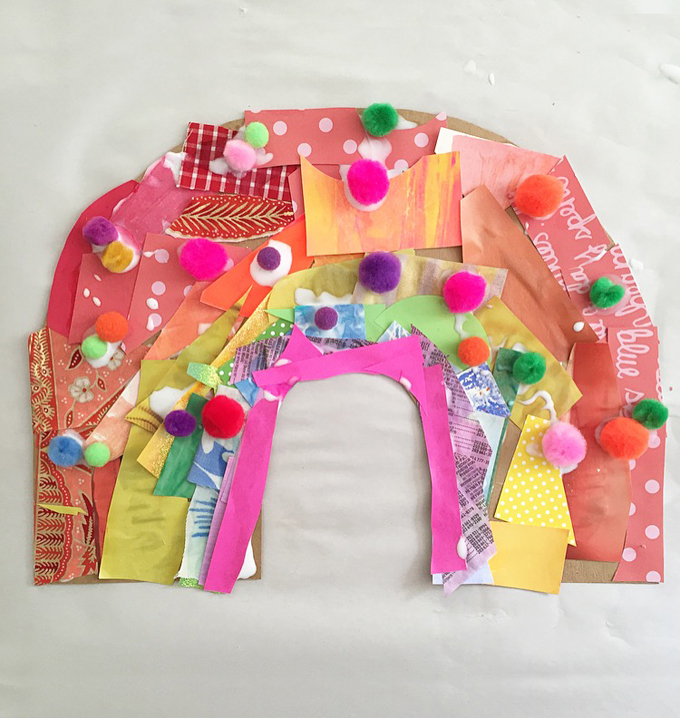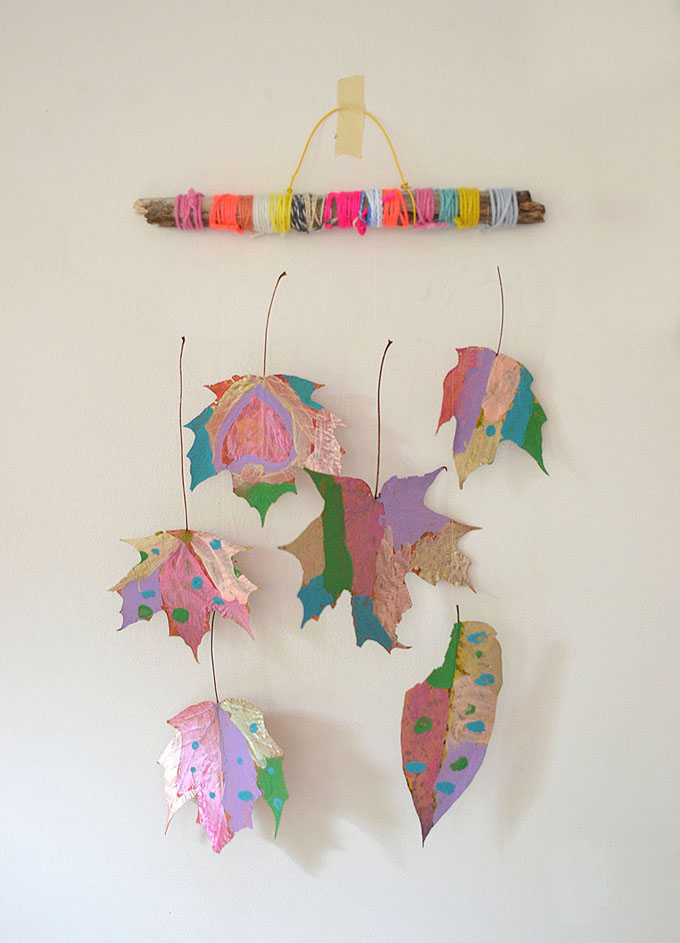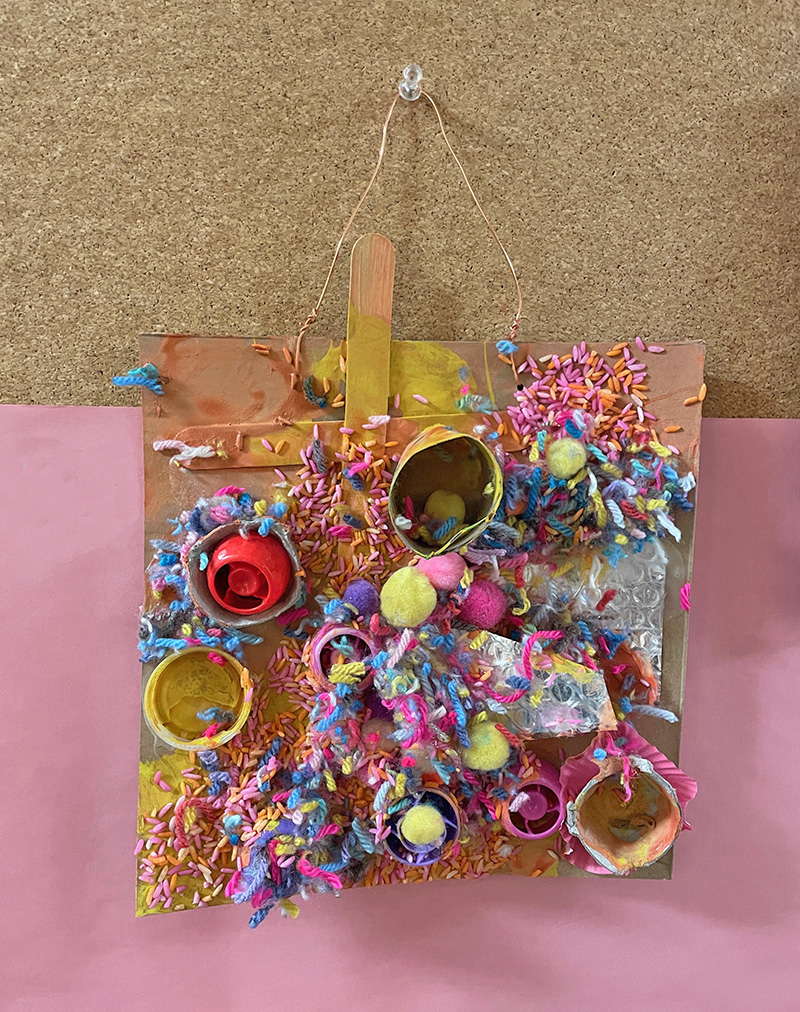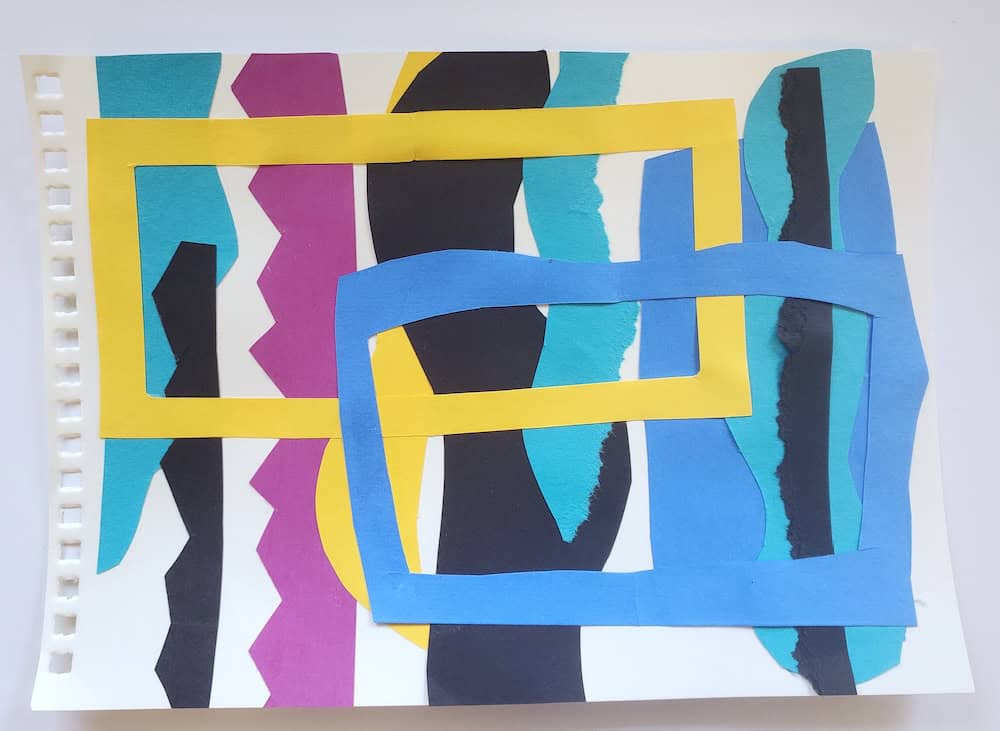We experienced another successful community art table! This time, I set out leaves with fabric scraps, tempera paint, glue, and colored construction paper. I had a prompt at the table, but children could use the materials however they chose. The results were pure magic. I love every single piece!
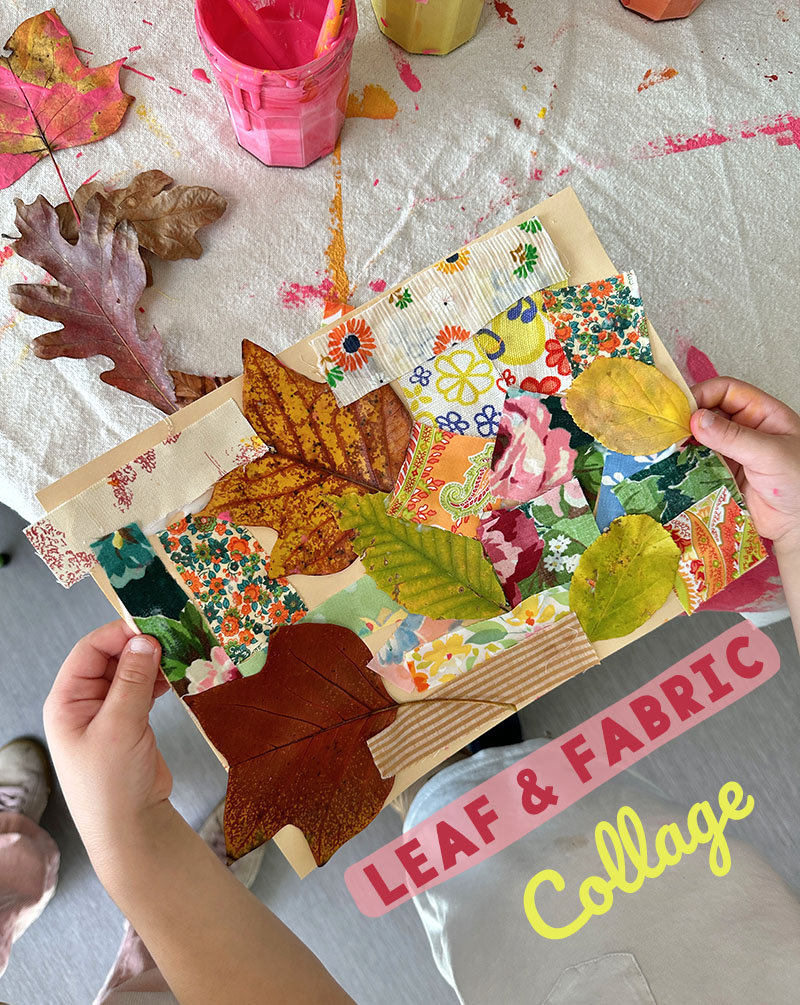
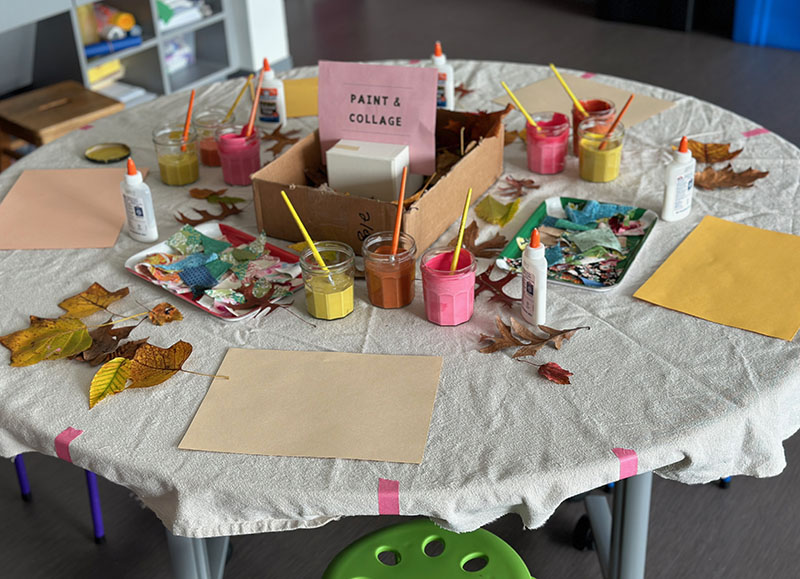
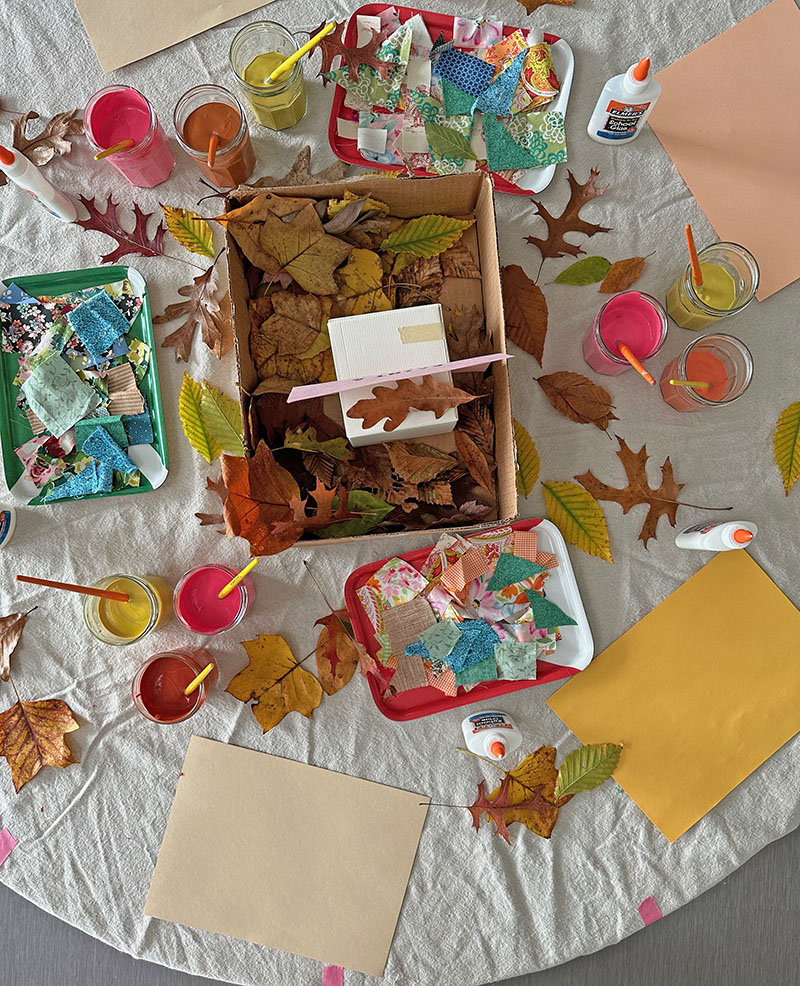
Setting up the table:
I used a round table and made sure there were about 3 separate stations so children didn’t have to reach too far to get what they needed.
1. Start by covering your table. I like using a dropcloth, it can absorb the paint a little if there are spills, and it can be washed and reused, so it saves on paper.
2. Mix some warm colors. I added white and a dash of purple to the yellow to make it a little more muted and opaque. I mixed the orange with a dash of blue and a little white so make it more of a burnt orange. You can add a little red, too. And I added white to the neon pink. Add a brush or two to each jar.
3. Set out a box of leaves and some trays of fabric scraps. And add some glue bottles, making sure that they all work. I used light, warm-colored construction paper instead of white so that even the most minimalist explorations would feel complete.
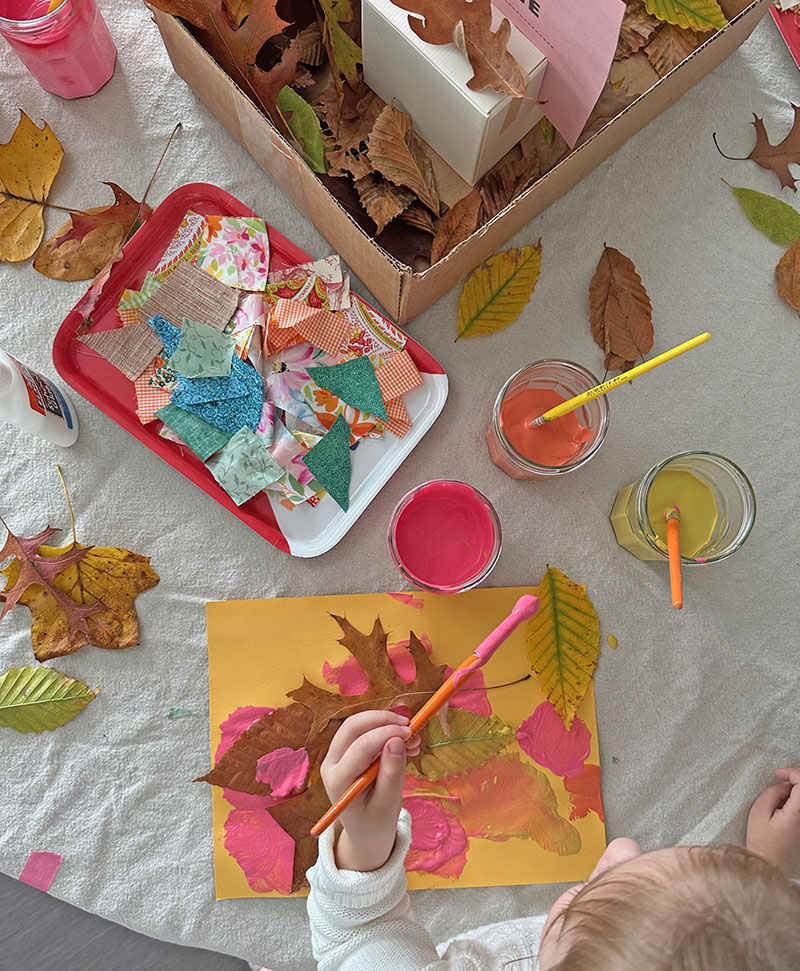
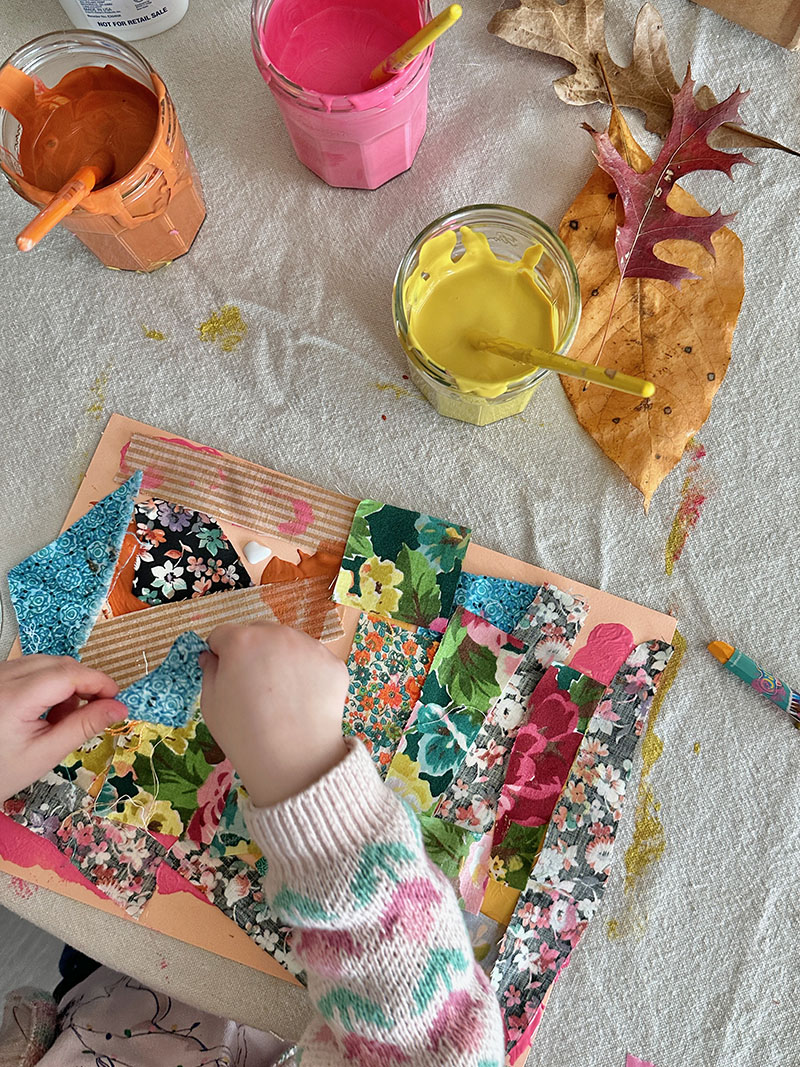
Managing the process:
1. The thing I love most about setting up an essentially self-serve art experience is watching how children will use the materials and in what sequence. When I used to have art classes in my house, I would have staggered this type of project. Meaning, I would have started with collage and then brought out the paint, or maybe vice-versa. This is because art class was an hour and I wanted to extend the experience for as long as possible. But I can admit that spacing the use of materials controls the experience to a certain degree, since children don’t have full autonomy over when to use the materials. With a community table where children and families come and go, I can’t space out the usage of the materials even if I wanted to, it would be too clumsy and take up so much of my time. I have up to 75 people in the room at one time with three different tables, so I need to set up a painting experience with the understanding that all the materials are out at once and children will have autonomy over their entire experience (that is, if a parent doesn’t control it). This first used to make me anxious, but now I love and embrace the outcomes and I don’t think I’ll ever go back!
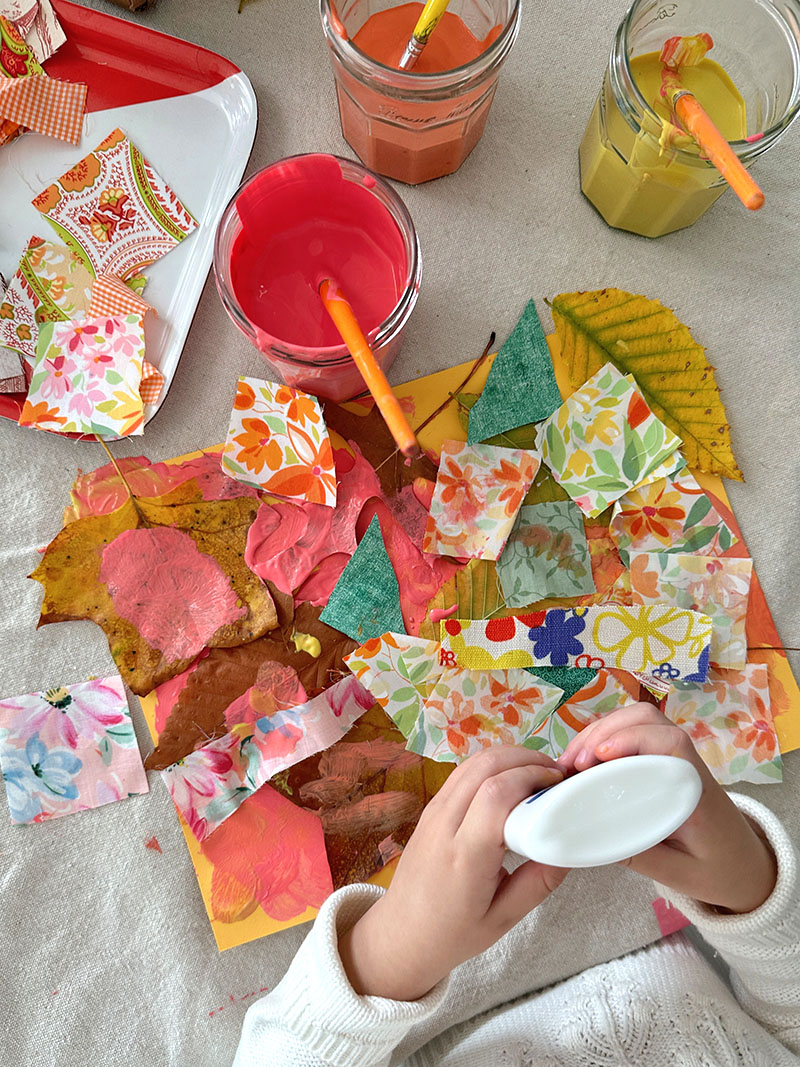
2. The only thing I have to manage is making sure to restock the fabric scraps, add more paint (but I didn’t actually have to do that because even after 2 hours, the paint never ran out), and clean up the space quickly to add some fresh paper. The rest is just left to fate!
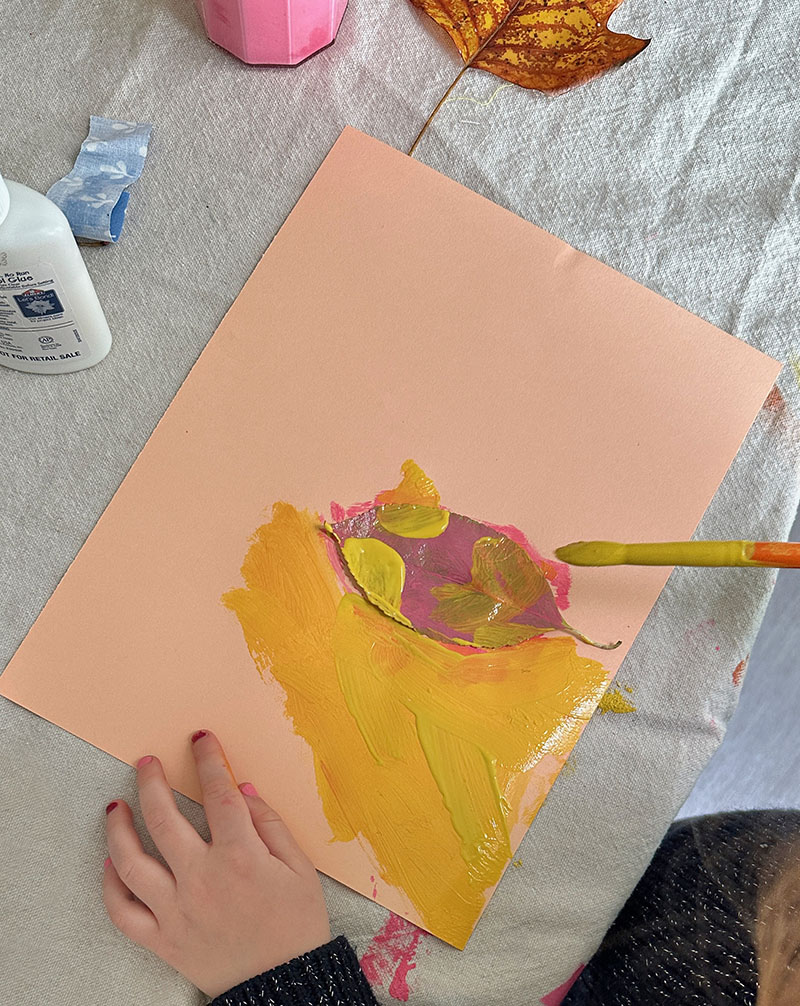
3. I absolutely LOVE watching different styles emerge. This child had a very minimalist aesthetic. She started with this simple yet dazzling layout, adding yellow all the way around her painted leaf.
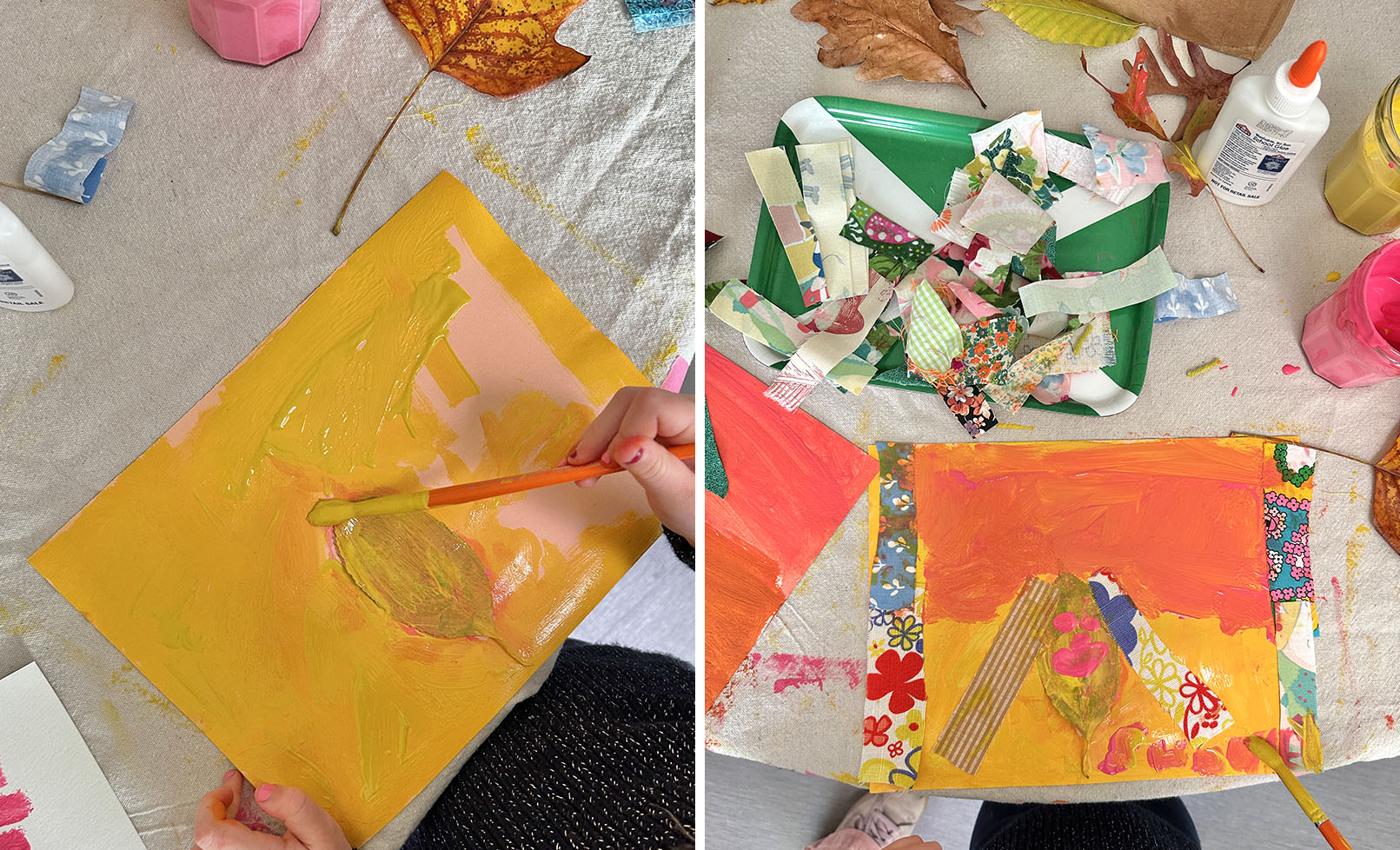
Once all the yellow was added, she painted back over her leaf so it was just a monochromatic piece. Next time I cam pack she had added another color at the top, and made hair and a border from the fabric. It was fascinating to watch her iterate.
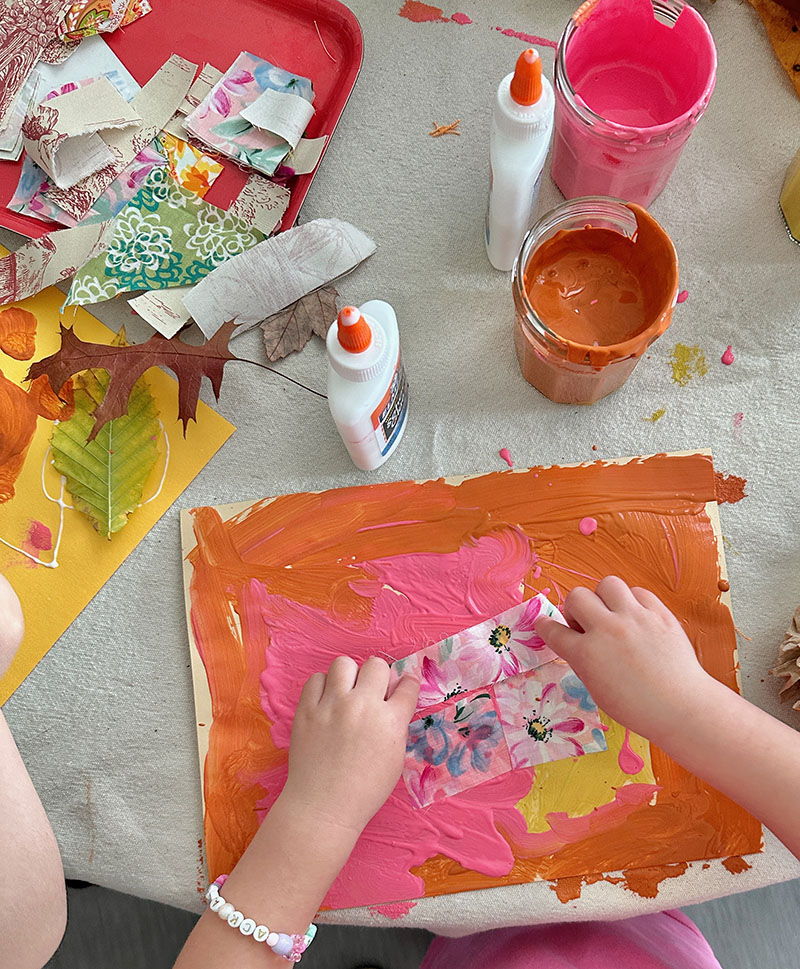
We had other minimalists as well. This one really caught my eye.
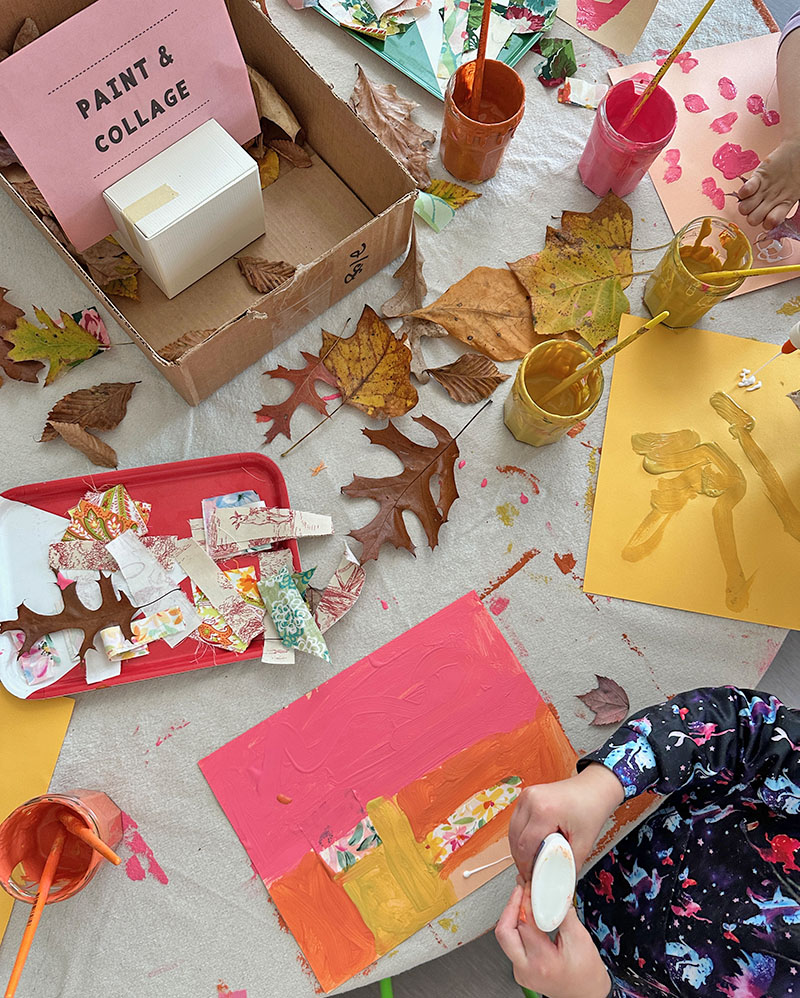
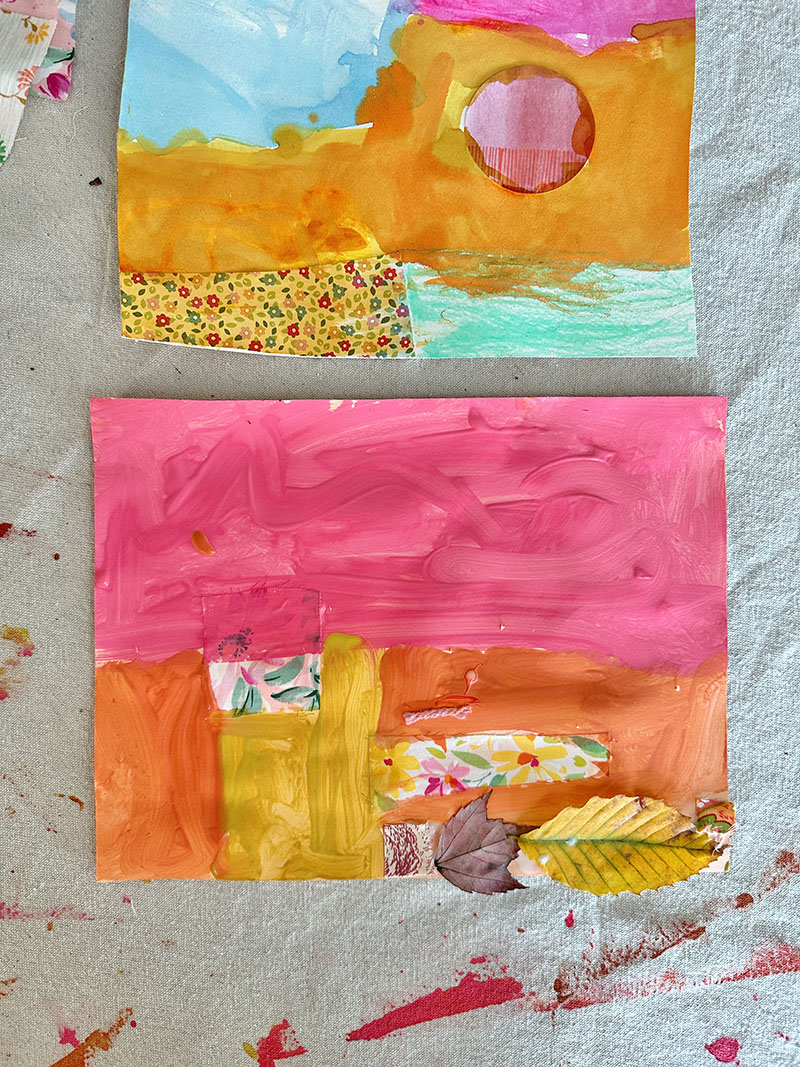
And these were two of my very favorite pieces of the whole day. The control and purpose behind these mixed-media paintings are unreal! Frame worthy.
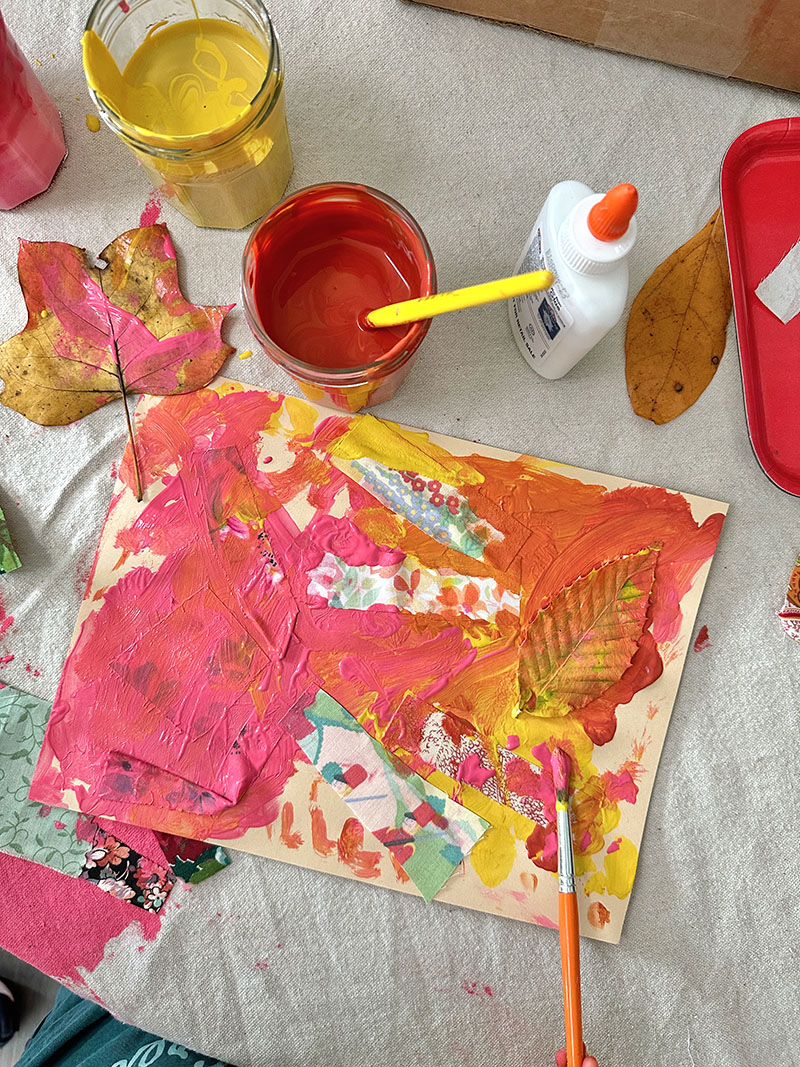
This child was very young, maybe between 2 and 3 years old. Her parents were nearby but let her work mostly by herself, adding layers and layers of color and collage. I love it so much.
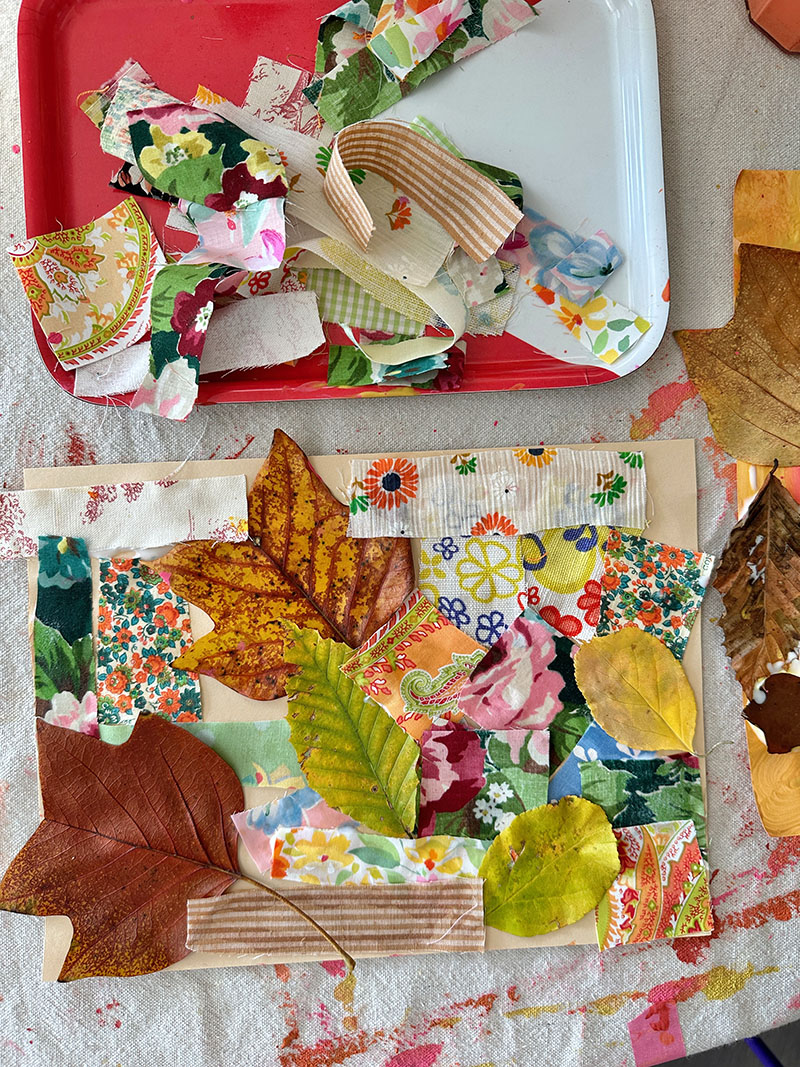
This artist seemed to have a particular affinity for the textural collage pieces and didn’t want to add any paint. The colors and composition are so on point.
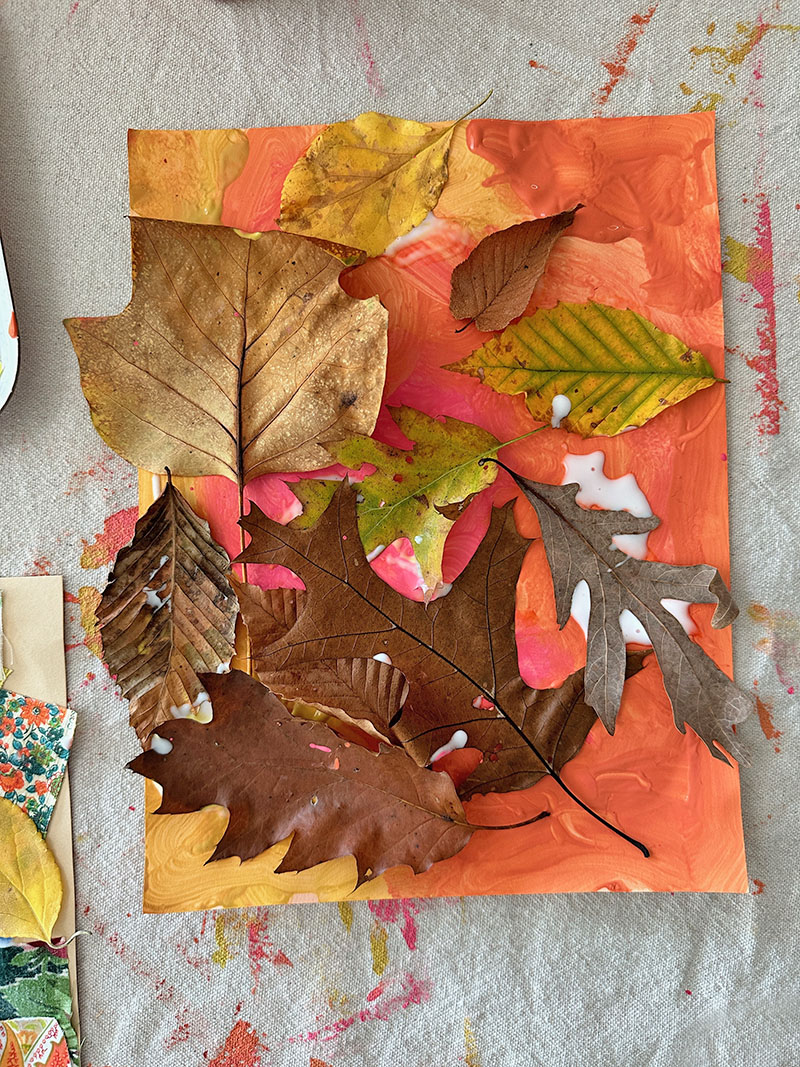
4. Make sure you have a drying area nearby. We just used the floor. I would also suggest having a few pieces of flat, scrap cardboard available for the very wet paintings that needed to get home without too much mess.
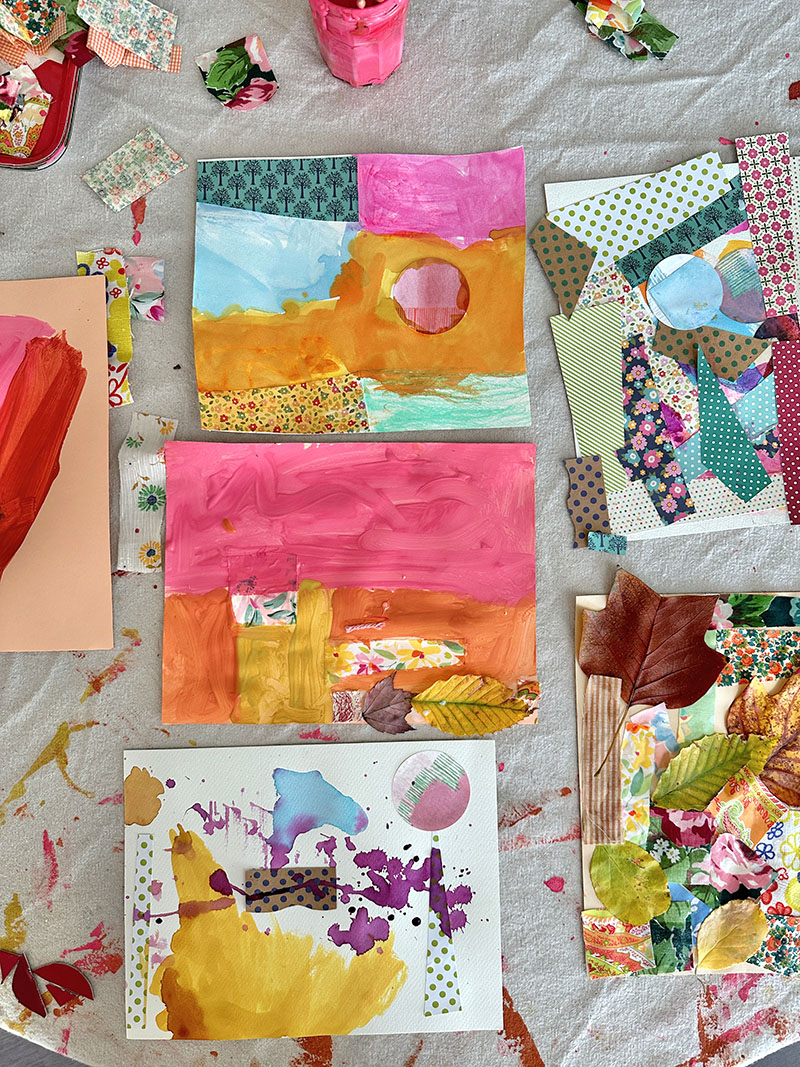
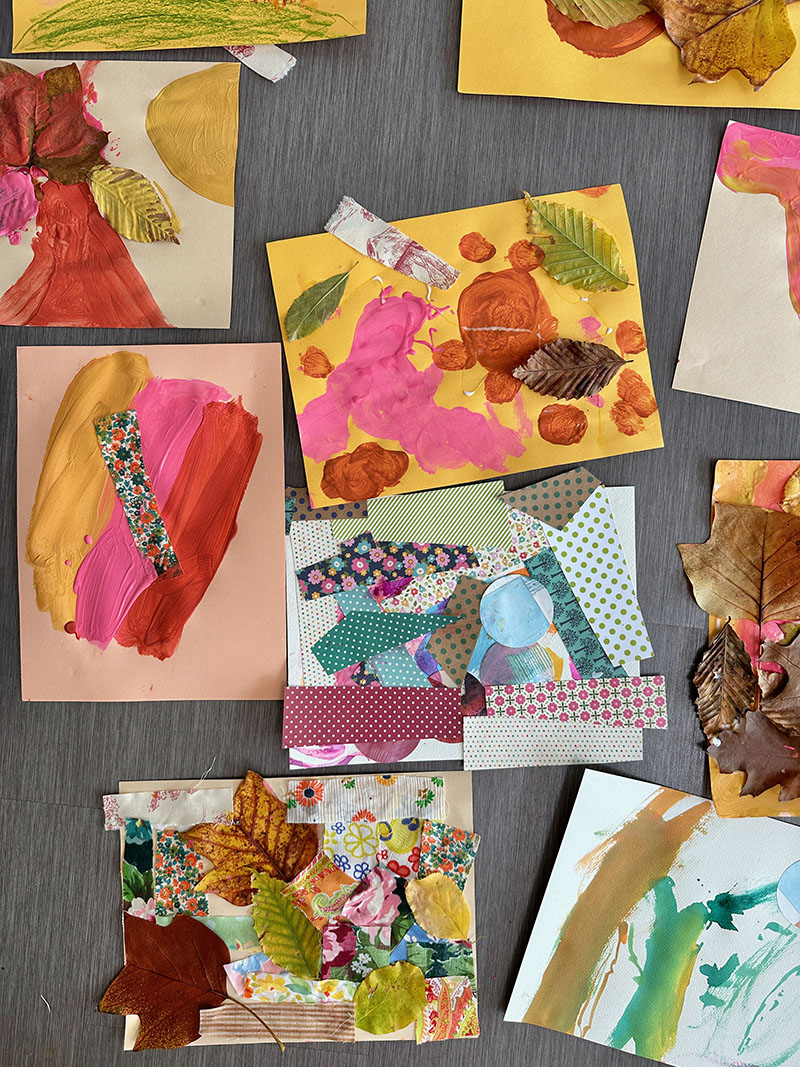
5. What I learned from watching the children hard at work at this painting table was that they use core design elements so effortlessly and instinctively, such as color, texture, space, form, mark-making, and composition. It’s actually so inspiring!
Let me know if you try this one, and tag me on Instagram @artbarblog if you do!
xo Bar
– – – – – – – – – – – – – – – – – – – –
Did you like this post? Here are other collage and leaf ideas:

